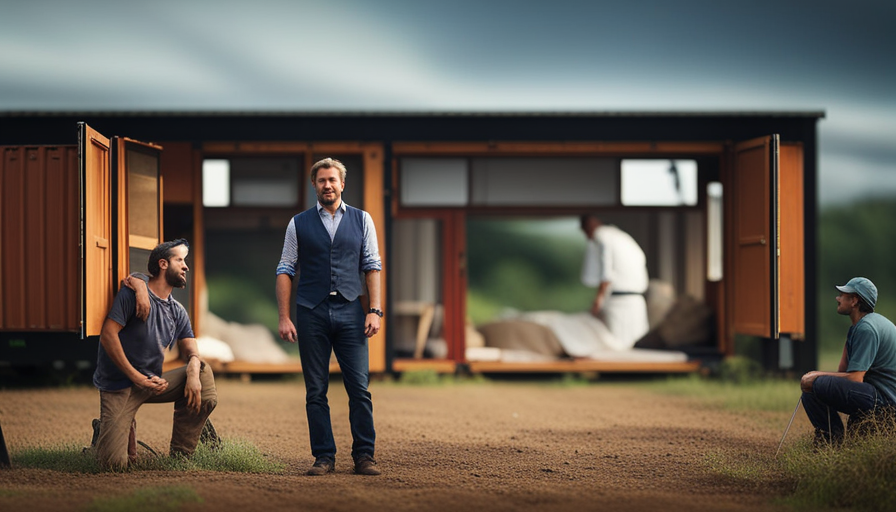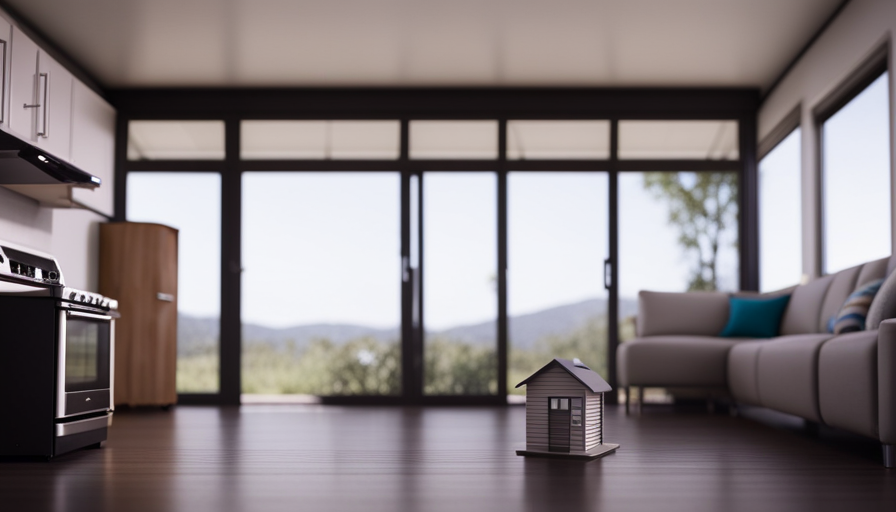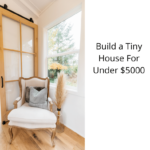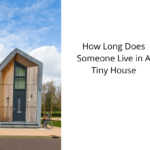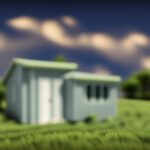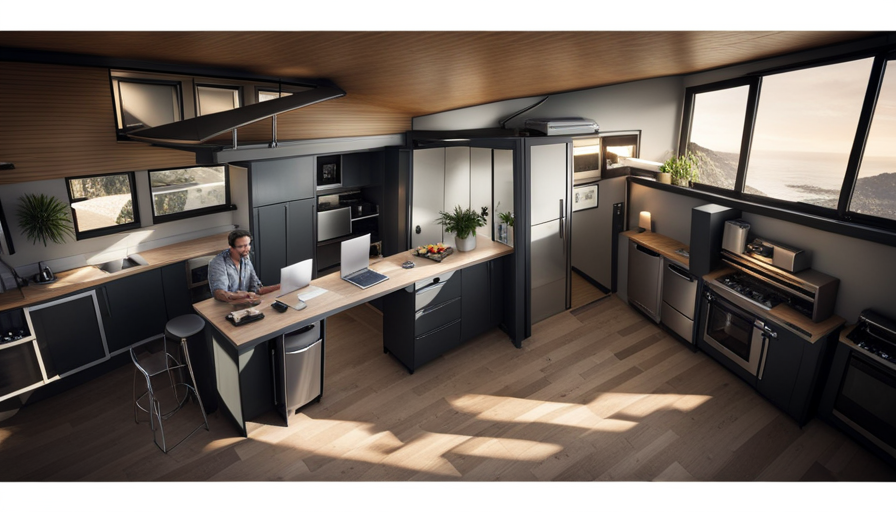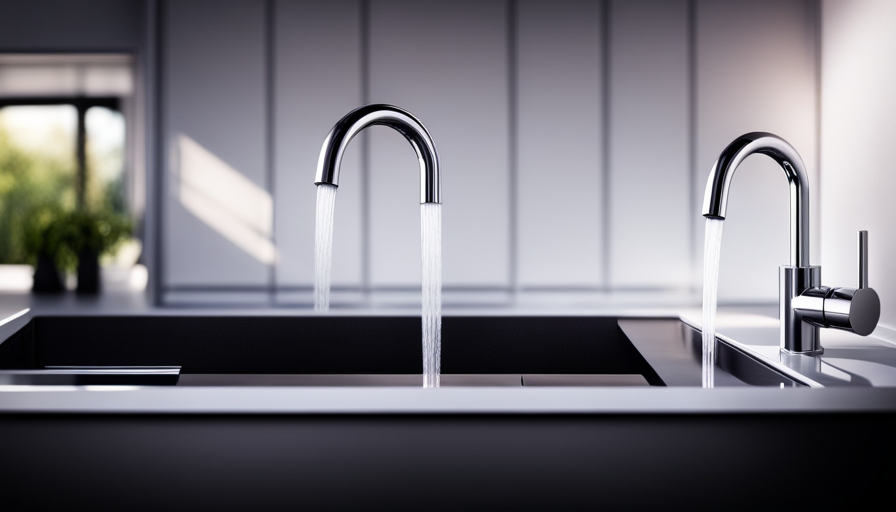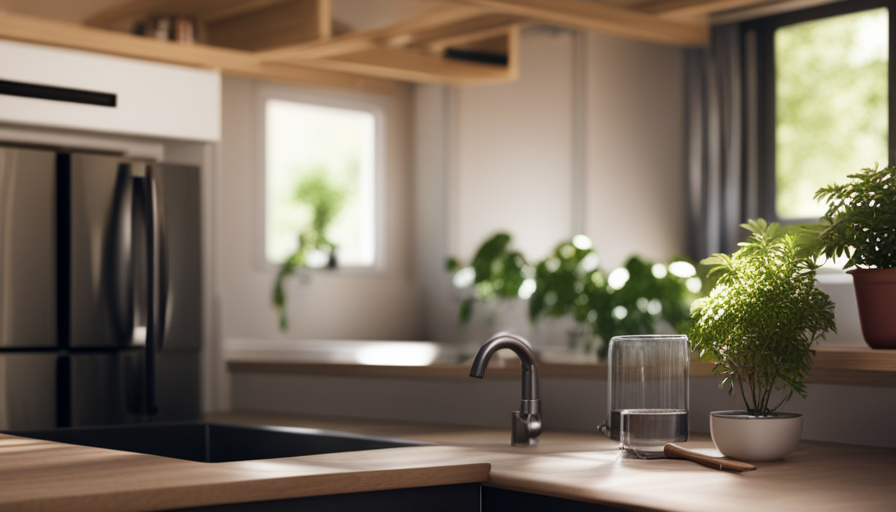Did you know that the average cost of building a small home in the United States is approximately $23,000? This is significantly less than what you would typically spend on a traditional house! If you are considering building your own tiny house, you may be wondering about the most cost-effective way to do so. Luckily, you have come to the right place! In this article, I will guide you through the most affordable way to build a tiny house, breaking down each step of the process.
First and foremost, it’s crucial to set a budget and stick to it. By determining your financial limitations from the beginning, you can make informed decisions throughout the building process.
Additionally, choosing a suitable location and opting for a simple design are key factors in keeping costs down. Using recycled or reclaimed materials and considering DIY construction can also save you a significant amount of money.
Furthermore, utilizing natural and energy-efficient resources will not only reduce your environmental footprint but also lower your expenses in the long run. It’s essential to research local building codes and regulations to ensure you’re compliant and avoid any costly surprises.
Lastly, getting creative with interior decor and seeking out affordable financing options will help make your tiny house dreams a reality without breaking the bank.
So, let’s dive into the details and discover how you can build the cheapest tiny house possible!
Key Takeaways
- Set a budget and stick to it as the cheapest way to build a tiny house.
- Keep costs down by choosing a suitable location, opting for a simple design, and using recycled or reclaimed materials.
- Maximize your budget by determining affordable spending, creating a detailed expense plan, and utilizing prefabricated components or modular construction methods.
- Utilize natural and energy-efficient resources such as solar panels, rainwater harvesting systems, and energy-efficient appliances to save on long-term costs.
Set a Budget and Stick to It
Setting a budget and sticking to it is crucial in order to ensure that every dollar is accounted for and maximized when building a tiny house. To stick to a budget, it’s important to first determine how much you can afford to spend on your tiny house project. Consider your current financial situation, including income, savings, and any loans or financing options available to you.
Once you have a clear understanding of your budget, create a detailed plan that outlines all the expenses you’ll encounter during the construction process, such as materials, labor, permits, and utilities. Research and compare prices for different materials and services to find the best deals and discounts. Additionally, consider repurposing or salvaging materials to save money. Keep track of your expenses throughout the project to ensure you stay within your budget.
When it comes to choosing a suitable location for your tiny house, consider factors such as zoning laws, access to utilities, and proximity to amenities. By carefully considering these factors and sticking to your budget, you can successfully build a tiny house that meets your needs and financial constraints. Transitioning into the subsequent section about choosing a suitable location, it’s important to take these factors into account.
Choose a Suitable Location
Finding the perfect spot for your itty-bitty abode can be a real head-scratcher, but fear not! Choosing the right location is crucial when it comes to building a tiny house. You want to find suitable land that meets your needs while also keeping costs low.
Here are four key factors to consider:
-
Zoning Regulations: Check local zoning laws and building codes to ensure that you can legally build a tiny house on the chosen land. Some areas may have restrictions on minimum square footage or require specific permits.
-
Accessibility: Look for a location that provides easy access to essential amenities like water, electricity, and sewage systems. Connecting to existing utilities can save you money and simplify the construction process.
-
Climate and Environment: Consider the climate and environmental conditions of the area. Extreme weather or environmental hazards can impact the durability and maintenance of your tiny house. Choose a location that suits your preferences and minimizes potential risks.
-
Cost: Evaluate the overall cost of the land, including any additional expenses such as site preparation and infrastructure development. Opting for a location with lower land prices can significantly reduce your overall budget.
Choosing the right location and finding suitable land is just the first step in building an affordable tiny house. In the next section, we’ll explore how opting for a simple design can further save you money.
Opt for a Simple Design
To maximize affordability, consider choosing a straightforward and minimalist design for your compact dwelling. A minimalist design focuses on simplicity and functionality, which can significantly reduce construction costs. Opting for a minimalist design means avoiding unnecessary frills and complexities, such as intricate architectural details or complicated floor plans. Instead, prioritize open spaces, clean lines, and efficient use of space. This approach not only saves money but also allows for a more practical and comfortable living environment.
When it comes to cost-effective construction, simplicity is key. Stick to basic building materials and techniques that are readily available and affordable. Avoid incorporating expensive or high-maintenance materials that can drive up costs. Instead, focus on durable materials that are easy to work with and require minimal upkeep. Additionally, consider utilizing prefabricated components or modular construction methods, as they can be more cost-effective and efficient.
By choosing a minimalist design and cost-effective construction methods, you can significantly reduce the overall expenses of building a tiny house. This allows you to allocate more resources towards other crucial aspects, such as using recycled or reclaimed materials. Incorporating recycled or reclaimed materials not only adds a unique and environmentally friendly touch to your tiny house but also helps reduce costs even further. With a minimalist design and cost-effective construction methods in place, you can now transition into the subsequent section about utilizing recycled or reclaimed materials without compromising on affordability or sustainability.
Use Recycled or Reclaimed Materials
Consider incorporating salvaged wood, reclaimed bricks, or repurposed windows and doors to add character and charm to your compact living space. Using recycled or reclaimed materials not only helps to reduce waste and minimize the environmental impact of your tiny house construction, but it can also save you a significant amount of money.
When it comes to eco-friendly building materials, there are various options available. Salvaged wood, for example, can be sourced from old barns, warehouses, or even demolished buildings. It can be used for framing, flooring, and even creating unique furniture pieces.
Reclaimed bricks can be found at salvage yards and can be used for exterior walls, giving your tiny house a rustic and timeless look. Repurposed windows and doors can add character to your tiny house while also allowing natural light to flood in.
Additionally, using alternative construction methods such as straw bale or earthbag construction can further reduce costs and promote sustainability. These methods utilize natural and abundant materials, providing excellent insulation and reducing the need for traditional building materials.
Considering these eco-friendly building materials and alternative construction methods can help you create an affordable and sustainable tiny house.
Transitioning into the subsequent section about DIY construction, it’s important to consider the benefits of taking a hands-on approach to building your tiny house.
Consider DIY Construction
Taking on the challenge of constructing your own tiny house can be a rewarding and fulfilling experience, allowing you to create a personalized and unique living space. DIY construction offers several benefits, including cost savings and the satisfaction of building something with your own hands.
One of the primary advantages of DIY construction is the ability to save money. By doing the work yourself, you can avoid labor costs and markups on materials, resulting in significant cost savings. Additionally, DIY construction allows you to have full control over the design and layout of your tiny house. You can customize every aspect to suit your specific needs and preferences.
To further maximize cost savings, consider employing cost-saving techniques such as sourcing materials from salvage yards, using repurposed items, and utilizing alternative construction methods. These techniques can help minimize expenses while still creating a structurally sound and aesthetically pleasing tiny house.
By taking on the challenge of DIY construction, you can not only save money but also create a space that is truly your own. Transitioning into the subsequent section about maximizing space with smart storage solutions, it is important to consider how to efficiently utilize the limited space available in a tiny house.
Maximize Space with Smart Storage Solutions
When it comes to maximizing space in your tiny house, get creative and think outside the box with smart storage solutions. By incorporating innovative furniture designs and smart space-saving solutions, you can make the most of every square inch in your tiny home.
Here are four ideas to help you maximize space in your tiny house:
-
Wall-mounted folding table: This space-saving solution serves as both a dining table and a workspace. When not in use, simply fold it up against the wall to free up floor space.
-
Loft storage: Utilize the vertical space in your tiny house by creating a loft area for storage. Install shelves or cabinets in this area to store items that are not frequently used.
-
Multi-functional furniture: Opt for furniture pieces that serve multiple purposes. For example, a sofa that can be transformed into a bed or a coffee table with built-in storage compartments.
-
Overhead storage racks: Install overhead storage racks in your kitchen or living area to make use of the unused space above. This is a great place to store items like pots, pans, or books.
By incorporating these smart storage solutions, you can make your tiny house feel more spacious and organized.
Transitioning into the subsequent section about utilizing natural and energy-efficient resources, it is important to consider not only the space-saving aspect of your tiny house but also the functionality and sustainability of the materials and resources used.
Utilize Natural and Energy-Efficient Resources
To maximize the functionality and sustainability of your tiny home, make use of natural and energy-efficient resources like solar panels and rainwater harvesting systems. Natural building techniques, such as using locally sourced materials and incorporating passive design strategies, can significantly reduce the environmental impact of your tiny house. For instance, using materials like straw bales, cob, or reclaimed wood can not only lower costs but also decrease carbon emissions associated with manufacturing and transportation.
In addition to natural building techniques, integrating energy-efficient appliances into your tiny home can further reduce energy consumption. Opt for appliances that are ENERGY STAR certified, as they are designed to use less electricity without compromising performance. Consider installing LED lighting fixtures, which are highly energy-efficient and have a longer lifespan compared to traditional incandescent bulbs.
To better visualize the benefits of utilizing natural and energy-efficient resources, take a look at the table below:
| Resource | Description | Benefits |
|---|---|---|
| Solar Panels | Convert sunlight into electricity | Reduce reliance on the grid, lower energy bills |
| Rainwater Harvesting Systems | Collect and store rainwater for various uses | Decrease water consumption, save on water bills |
| Natural Building Materials | Utilize locally sourced and sustainable materials for construction | Lower environmental impact, reduce carbon emissions |
Now, let’s move on to the next section about researching local building codes and regulations, which is crucial for ensuring your tiny house complies with legal requirements.
Research Local Building Codes and Regulations
Make sure you research local building codes and regulations to ensure your tiny home meets all legal requirements and can be enjoyed without any concerns. Researching local building codes is an essential step in the process of building a tiny house. Each area has its own set of regulations that must be followed, including specific requirements for minimum square footage, safety standards, and zoning restrictions.
By thoroughly researching and understanding the local building codes, you can avoid costly mistakes and potential legal issues.
In addition to researching building codes, you should also consider finding suitable locations for your tiny house. Some areas may have restrictions on where tiny homes can be placed, such as requiring them to be located in designated tiny home communities or on private property. It is important to find a location that not only meets the legal requirements but also suits your needs and preferences.
Once you have a good understanding of the local building codes and have found a suitable location, you can move on to the next step of getting creative with interior decor and furnishings. By utilizing space-saving techniques and clever design ideas, you can make the most of your tiny home and create a comfortable and functional living space.
Get Creative with Interior Decor and Furnishings
Embrace your inner artist and transform your tiny home into a cozy oasis with unique interior decor and furnishings that’ll make your space feel like a whimsical sanctuary.
Here are some creative interior design ideas and budget-friendly furnishing options that’ll help you make the most of your tiny house:
-
Multi-functional furniture: Opt for furniture pieces that serve dual purposes, such as a sofa that can be converted into a bed or a coffee table with hidden storage compartments. This way, you can maximize the functionality of your space without sacrificing style.
-
Upcycled and repurposed items: Look for second-hand furniture or repurpose items you already have to save money. For example, you can transform old pallets into a stylish and rustic dining table or use vintage suitcases as storage containers.
-
DIY projects: Get creative and make your own decor and furnishings. You can build floating shelves using reclaimed wood, create a gallery wall with thrifted frames, or make personalized throw pillows with fabric remnants. DIY projects not only save money but also add a personal touch to your tiny home.
By incorporating these creative interior design ideas and budget-friendly furnishing options, you can turn your tiny house into a beautiful and functional living space.
Now, let’s explore how to seek out affordable financing options for your project.
Seek out Affordable Financing Options
Now that we’ve explored creative ways to decorate and furnish your tiny house, let’s shift our focus to seeking out affordable financing options and cost-saving building techniques.
When it comes to financing your tiny house project, it’s important to find affordable loan options that won’t break the bank. One option to consider is a personal loan from a bank or credit union. These loans typically have lower interest rates compared to credit cards or other high-interest loans. Additionally, some lenders offer specialized loans for tiny house construction, which may have favorable terms and rates.
Another cost-saving approach is to utilize building techniques that are both affordable and efficient. One such technique is using reclaimed or recycled materials. These materials can often be obtained at a lower cost or even for free, reducing your overall construction expenses. Additionally, incorporating energy-efficient features into your tiny house can help save on long-term costs. This can include using solar panels for electricity, installing a composting toilet, or using insulation that minimizes heat loss.
By exploring affordable financing options and implementing cost-saving building techniques, you can significantly reduce the overall expense of building your tiny house. This will not only make it more affordable but also allow you to create a sustainable and comfortable living space without compromising on quality.
Frequently Asked Questions
Can I use brand new materials to build a tiny house, or do I have to use recycled or reclaimed materials?
In the construction of a tiny house, the choice between using new materials or recycled materials is largely dependent on personal preference and budget. Using new materials offers several benefits, such as durability, reliability, and the ability to customize design. However, it can be more expensive compared to using recycled materials.
Utilizing recycled or reclaimed materials can provide a unique aesthetic appeal and contribute to sustainability efforts. Careful consideration of the pros and cons is essential when deciding which approach to take.
How much money should I budget for the construction of a tiny house?
When budgeting for the construction of a tiny house, there are several cost-saving strategies to consider. Firstly, opt for basic designs and avoid complex features that can increase expenses.
Secondly, carefully plan and source affordable materials, such as using recycled or reclaimed materials for certain parts.
Additionally, consider doing some of the construction work yourself to save on labor costs.
By considering these budgeting considerations and implementing cost-saving strategies, you can effectively manage your expenses during the construction process.
Are there any specific building codes or regulations that I need to be aware of when building a tiny house?
Building a tiny house can be a thrilling endeavor! However, it’s important to be aware of the building codes and regulations that govern such projects. These guidelines ensure that your tiny house meets safety standards and doesn’t become a miniature disaster waiting to happen.
From minimum room dimensions to electrical and plumbing requirements, there’s a lot to consider. So, before you dive into your tiny house dreams, make sure to research and familiarize yourself with the specific building codes and regulations in your area.
Are there any financing options available specifically for building a tiny house?
There are several financing options available for building a tiny house. One option is to obtain a personal loan from a bank or credit union. Another option is to use a credit card with a low interest rate. Additionally, some companies specialize in financing tiny house projects.
It’s important to consider the pros and cons of using recycled materials in tiny house construction. While using recycled materials can be cost-effective and environmentally friendly, it may require more time and effort to find suitable materials and ensure they meet building codes.
What are some creative ways to maximize space in a tiny house?
When it comes to maximizing space in a tiny house, space-saving furniture and creative storage solutions are the key. Symbolically, they represent the ingenuity and resourcefulness required to thrive in a limited environment.
Space-saving furniture such as foldable tables, hidden beds, and wall-mounted shelves can help optimize every inch. Additionally, utilizing under-bed storage, vertical wall space, and multi-functional furniture like ottomans with hidden compartments can further maximize storage capacity.
These practical solutions ensure that even the tiniest of spaces can be efficiently utilized.
Conclusion
In conclusion, building a tiny house on a budget requires careful planning, resourcefulness, and creativity. By setting a budget and sticking to it, choosing a suitable location, and opting for a simple design, individuals can save a significant amount of money.
Utilizing recycled or reclaimed materials and considering DIY construction further reduces costs. Additionally, utilizing natural and energy-efficient resources not only saves money in the long run but also contributes to sustainable living.
It’s interesting to note that according to a survey, 68% of tiny house owners reported having no mortgage, highlighting the financial freedom and affordability that comes with tiny house living.
Hi, I’m Emma. I’m the Editor in Chief of Tiny House 43, a blog all about tiny houses. While tree houses are often associated with childhood, they can be the perfect adult retreat. They offer a cozy space to relax and unwind, surrounded by nature. And since they’re typically built on stilts or raised platforms, they offer stunning views that traditional homes simply can’t match. If you’re looking for a unique and romantic getaway, a tree house tiny house might just be the perfect option.
